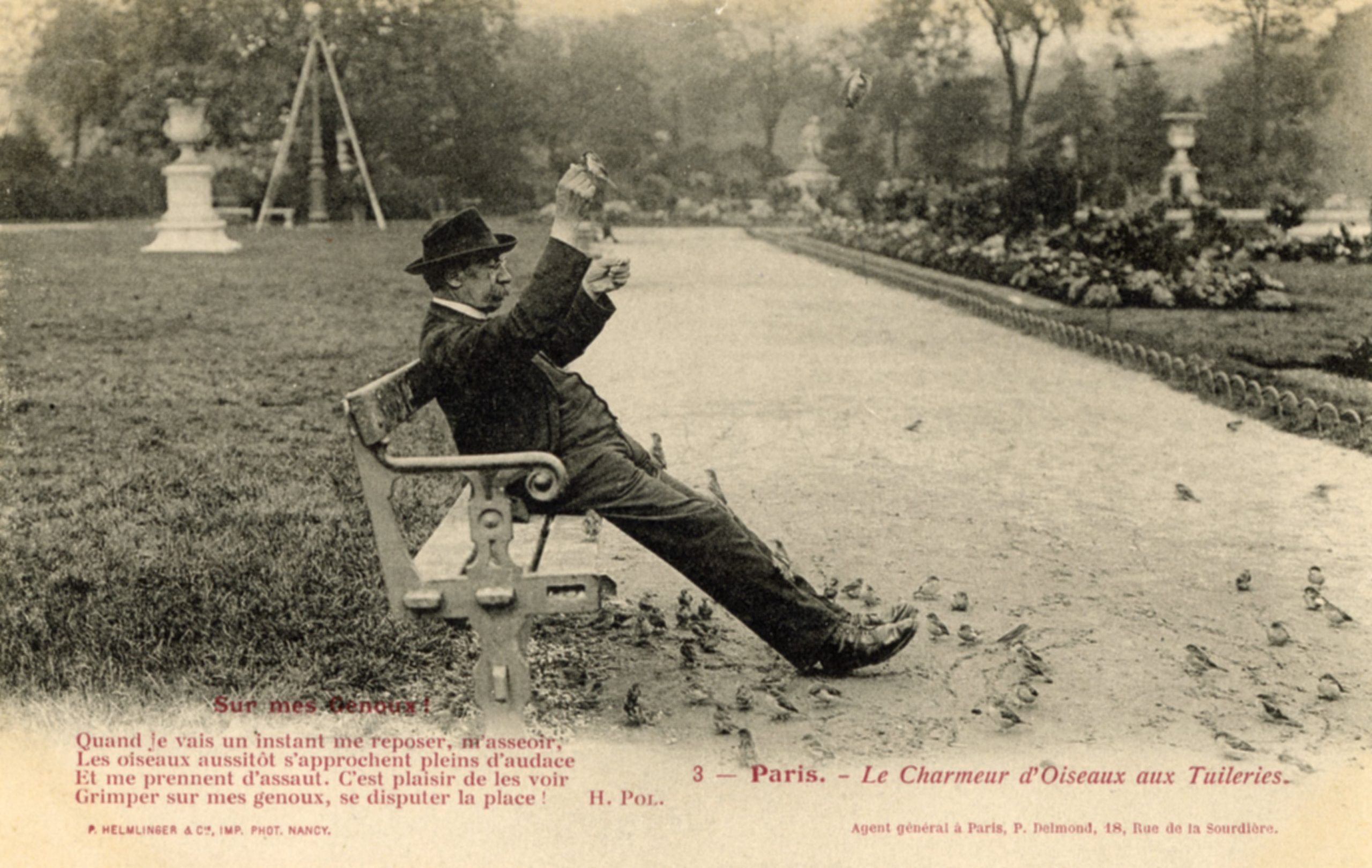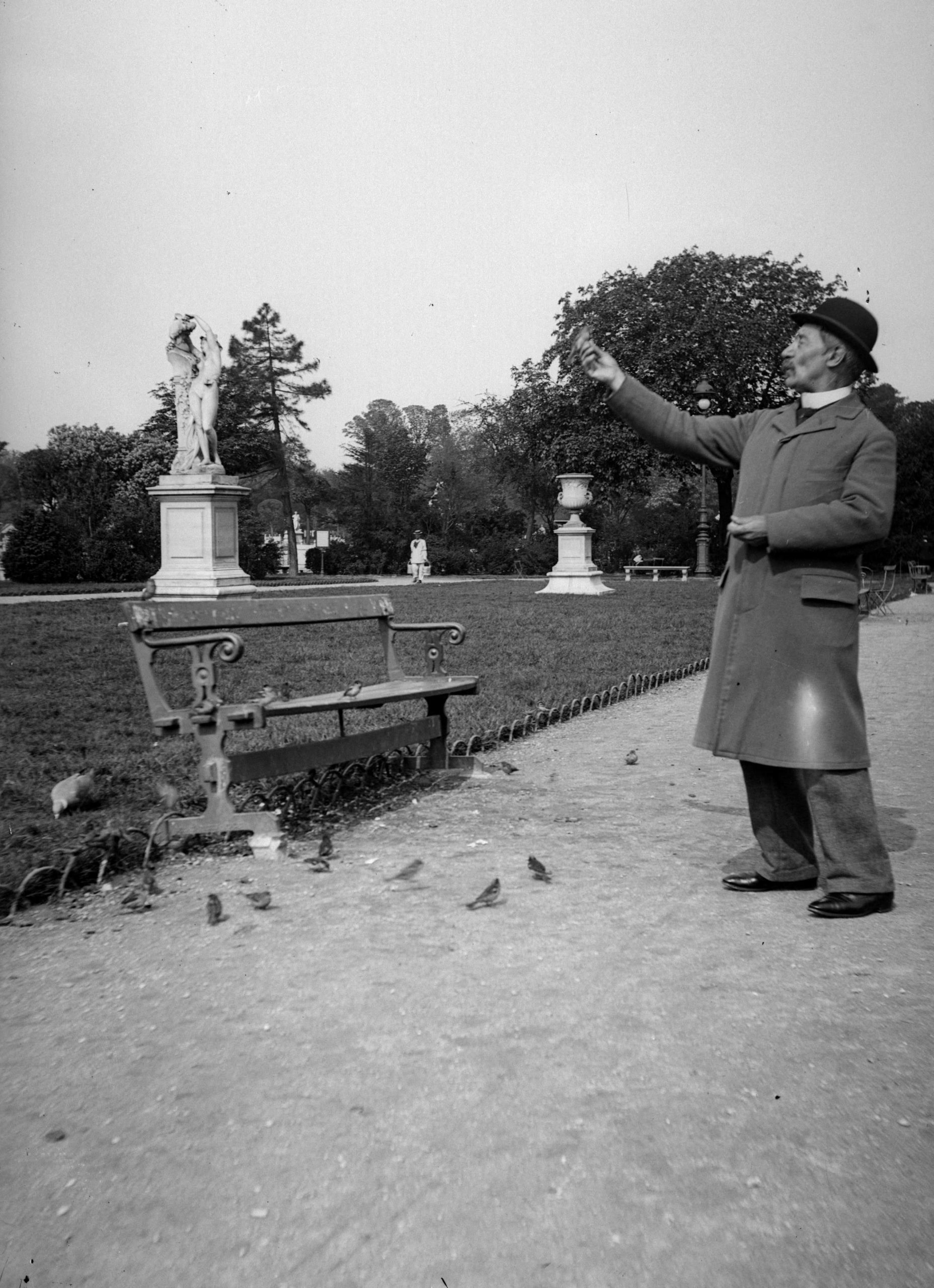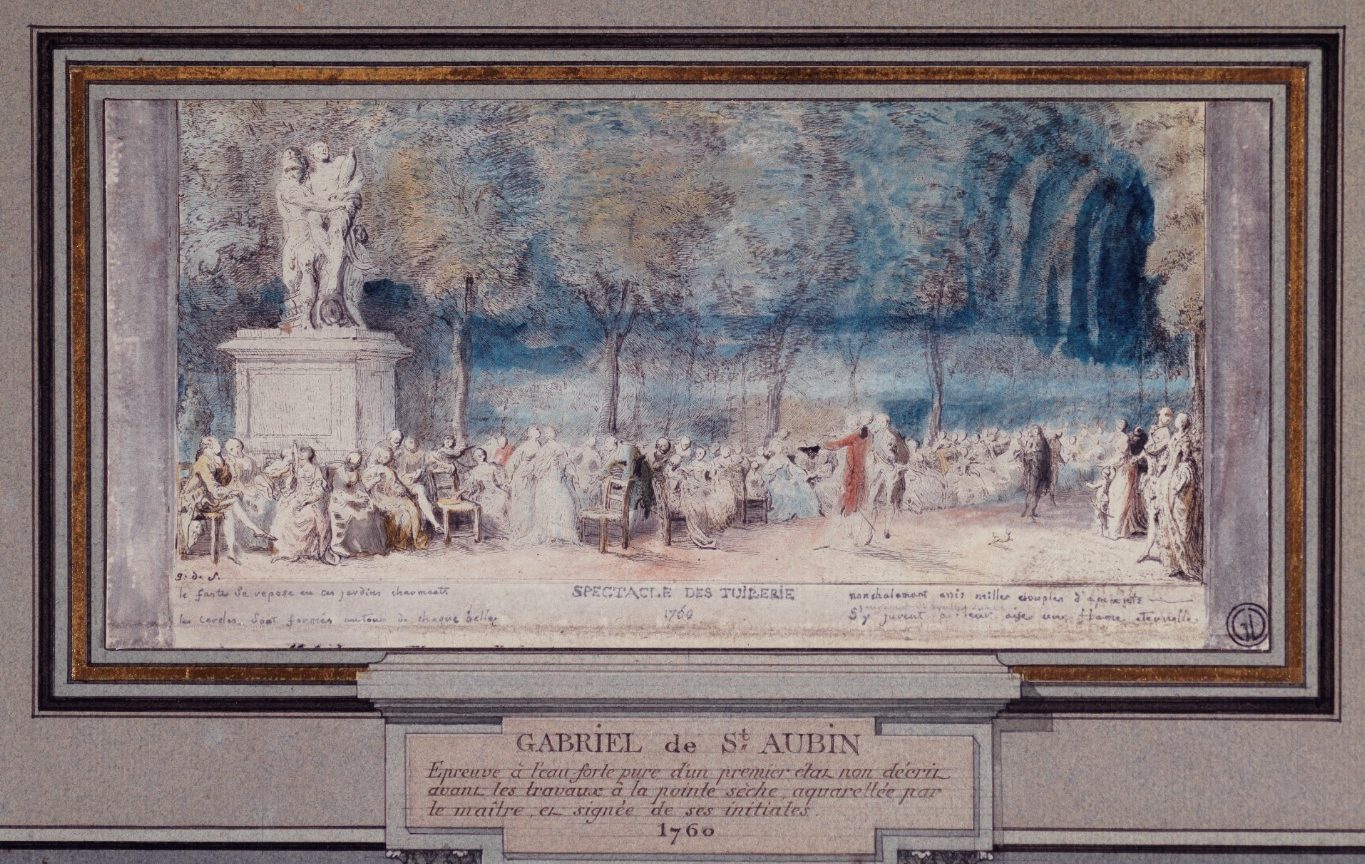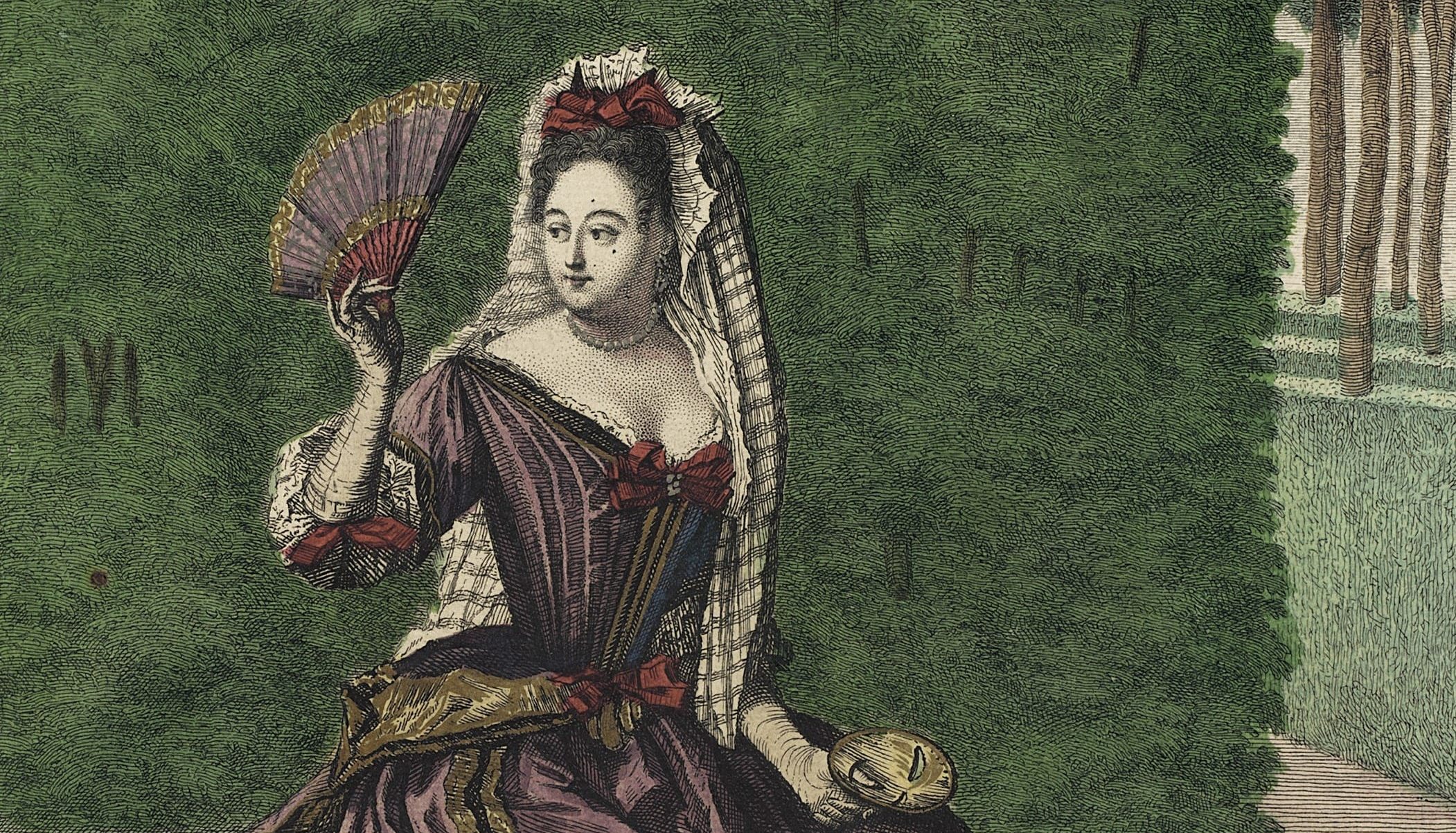
- Chronicle
Henri Pol, bird charmer
During the Second Empire, bird charmers appeared in the Tuileries Garden. Henri Pol was the most famous among them. Occupying a spot near the garden entrance, he would entice birds to come to him – at times upright, at others crouching, sitting on a chair or a bench, he conversed with the sparrows and the pigeons he fed, delighting many an onlooker. Pol gave each of the birds an original name: Joséphine, Garibaldi, Mme Longbec (Mrs Longbeak), Biribi (a reference to penal servitude), Jambe-de-Bois (wooden leg) and Quat’sous (humble).The former postal worker supplemented his pension with money he earned selling postcards that showed him at work in the garden. These also featured poems he composed, such as Le Charmant Contrat (The Charming Contract):
To our little birds I offer sustenance;
In my hands they find abundant grazing,
But according to a contract with their benefactor,
When I give my bread, they give me their hearts.
Here is ‘Robinet’s Meal’:
From my hand, the shameless Robinet comes to take
Every dish I announce: andouille, saucisson,
Blood sausage, calf’s head. Seven or eight times in a row,
He flies off, comes down, and quickly goes back up!

Henri Pol was a Parisian figure that newspapers loved to write about. When he passed away at the Chardon-Lagache retirement home on 17 June 1918, his obituary appeared in Le Petit Parisien!
Découvrez les
Chroniques du Jardin

- Chronicle


